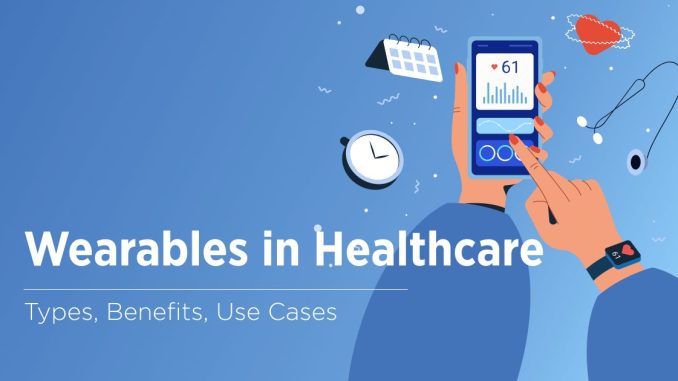
In a world increasingly driven by data and connectivity, wearable devices have transcended their initial role as simple fitness trackers to become sophisticated health monitoring tools. From smartwatches continuously tracking heart rate and sleep patterns to rings analyzing oxygen saturation and stress levels, these gadgets are generating a wealth of real-time, granular health data. This unprecedented access to personal health metrics is now profoundly influencing the health insurance industry, reshaping how risks are assessed, how premiums are set, and even how policyholders engage with their own well-being.
The fundamental premise behind the integration of wearable data into health insurance is the shift from reactive to proactive healthcare. Traditionally, health insurance primarily functioned as a safety net, responding to illness or injury. Premiums were largely based on broad demographic factors like age, gender, medical history (where permissible), and lifestyle questionnaires. However, wearables offer insurers a dynamic, continuous stream of information that can paint a far more precise picture of an individual’s actual health behaviors and associated risks. This allows for a more personalized and, potentially, fairer approach to underwriting and pricing.
For insurers, the primary benefit of wearable data lies in enhanced risk assessment. Actuaries, who are tasked with evaluating risk and setting premiums, can now move beyond static data points. By analyzing real-time data on physical activity levels, heart rate variability, sleep quality, and even early indicators of potential health issues, insurers can gain a more accurate understanding of a policyholder’s health profile. For example, a policyholder who consistently meets daily step goals, maintains a healthy resting heart rate, and gets sufficient sleep, as evidenced by their wearable data, demonstrates a lower risk of developing certain chronic conditions over time. This improved risk prediction can lead to more precise underwriting, allowing insurers to segment policyholders based on demonstrated health engagement rather than just statistical averages.
This more granular risk assessment directly translates into the potential for **personalized premiums** and **incentive programs**. Many forward-thinking health insurers are now offering discounts or rewards to policyholders who voluntarily share their wearable data and demonstrate healthy behaviors. In Thailand, for instance, companies like Muang Thai Life Assurance have “Fit Rewards” programs where policyholders can earn points by tracking steps and exercise minutes through wearable devices, which can then be converted into renewal premium discounts of up to 15%. Such programs create a win-win scenario: policyholders are incentivized to lead healthier lives, which can reduce their risk of illness, and insurers benefit from a healthier policy pool, leading to fewer and potentially less severe claims. This proactive approach to health management, driven by data, aims to prevent costly illnesses before they occur.
Beyond premium adjustments, wearable data also facilitates **proactive health management** and **early detection**. Insurers, in collaboration with healthcare providers, can leverage wearable data to offer personalized health tips, coaching, and alerts. If a wearable detects an irregular heart rhythm, for example, the insurer might prompt the policyholder to consult a doctor, potentially catching a serious cardiovascular issue in its early stages. This early intervention can lead to more effective and less expensive treatments, benefiting both the individual’s health and the insurer’s claims costs. The focus shifts from merely paying for sickness to actively promoting wellness.
However, the integration of wearable data into health insurance is not without its complexities and ethical considerations. The most prominent concern revolves around **data privacy and security**. Personal health data is inherently sensitive, and policyholders must have absolute assurance that their information is protected from breaches, misuse, or unauthorized access. Insurers must adhere to stringent data protection regulations and be completely transparent about how data is collected, stored, analyzed, and used. Trust is paramount, and any perceived breach of privacy could severely undermine the adoption of these programs.
Another ethical dilemma lies in the potential for **discrimination or algorithmic bias**. If health insurance premiums become heavily dependent on wearable data, individuals who, for reasons beyond their control (e.g., chronic illness, disability, socioeconomic factors limiting access to exercise or healthy food), cannot demonstrate “healthy” metrics might face higher premiums or even be denied certain benefits. This raises concerns about fairness and equitable access to essential health coverage. Insurers must ensure that their algorithms are free from bias and that their programs are designed to be inclusive and supportive, not punitive.
**Data accuracy and reliability** are also crucial. While wearables have become more sophisticated, their data is not always medically precise. Inconsistent readings or device malfunctions could lead to inaccurate health assessments, potentially affecting premium adjustments or access to benefits. Standardization across devices and robust validation processes for the data are necessary to ensure fairness and reliability in underwriting decisions.
Furthermore, the issue of **user consent and autonomy** is central. Participation in wearable-linked wellness programs must be entirely voluntary, and policyholders should have clear control over what data they share and with whom. The terms and conditions should be transparent, outlining the benefits of data sharing versus the implications of not participating.
In conclusion, wearable devices are undoubtedly reshaping the health insurance landscape, offering a compelling vision of more personalized, proactive, and potentially more affordable coverage. They empower insurers with unprecedented insights into policyholder health and behavior, enabling more accurate risk assessment and the creation of innovative wellness incentive programs. For policyholders, the allure of lower premiums and personalized health support is significant. However, the success and ethical sustainability of this revolution hinge on the industry’s ability to navigate critical issues surrounding data privacy, fairness, accuracy, and voluntary participation. As these technologies continue to evolve, finding the right balance between leveraging data for mutual benefit and protecting individual rights will be the defining challenge for the future of health insurance.